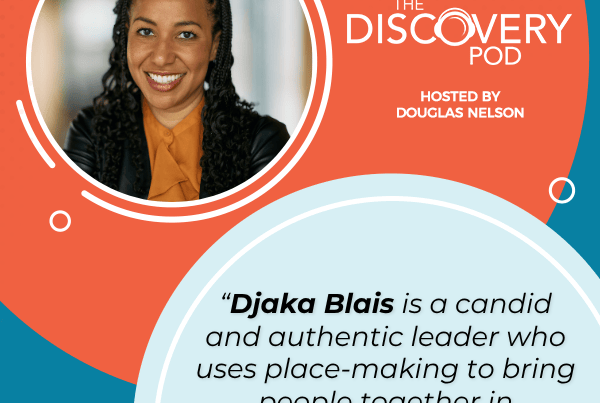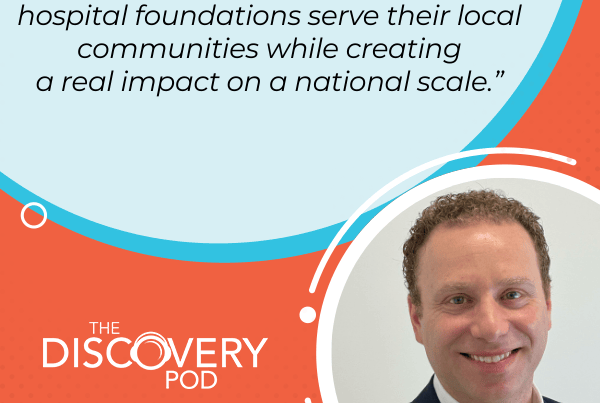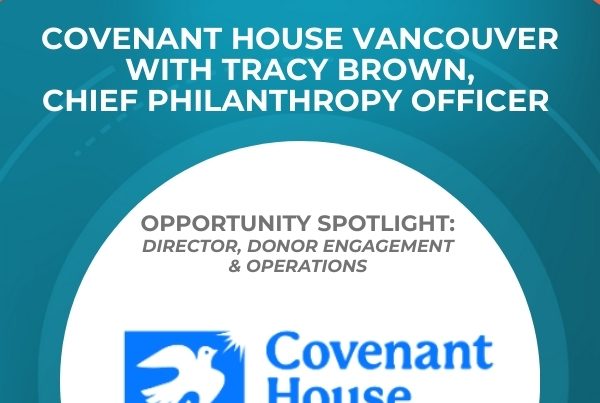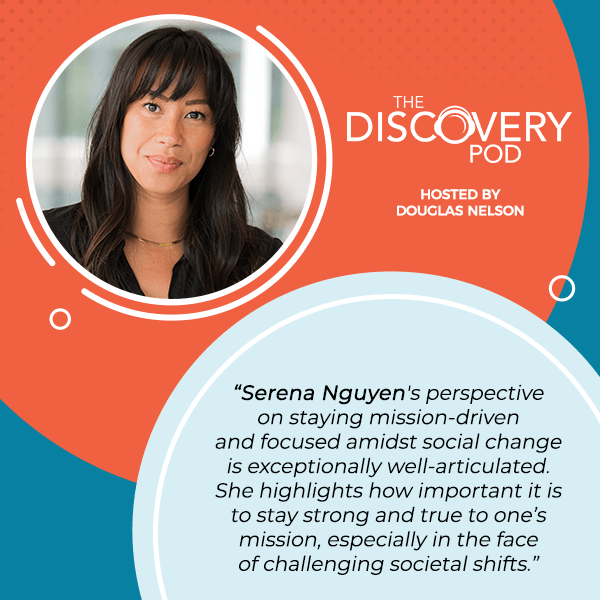
CILAR isn’t just a name—it’s a movement. In this episode, Douglas Nelson engages in a compelling conversation with Serena Nguyen, Founding Executive Director of the Coalition of Innovation Leaders Advancing Respect (CILAR). Delve into the captivating story of CILAR’s evolution into a dynamic platform actively shaping a better future. Serena candidly shares the ambitious vision, the challenges encountered, and the profound influence of their groundbreaking work, revealing how CILAR is actively molding innovation, cultivating genuine inclusion, and forging a new era of leadership. Prepare to be captivated by a story of dedication and real-world impact!
—
Listen to the podcast here
Coalition Of Innovation Leaders Advancing Respect (CILAR) With Serena Nguyen, Founding Executive Director
My guest on the show is Serena Nguyen. Serena is the Founding Executive Director of CILAR, the Coalition of Innovation Leaders Advancing Respect. Serena has championed inclusive ecosystems and driven outcome-oriented strategies in climate tech, in tech and beyond. Her ability to align governance and innovation with philanthropy reflects her commitment to addressing systemic challenges while inspiring bold, actionable solutions for the social profit sector.
For those of you who don’t know, CILAR is one of the really compelling stories and probably one of the best news stories to come out of The Pandemic Coalition. It unites top Canadian tech and innovation leaders to dismantle structural racism through initiatives like the Accelerate Mentorship Program. They empower BIPOC leaders, build diverse pipelines and foster connections and opportunities for long-term change. This conversation is about building a movement. It is about changing the way our society works, the way technology works, and the way the social profit sector can make it all happen. Please enjoy this conversation with Serena Nguyen.
—
Welcome, Serena.
Thank you.
CILAR’s Mission: Innovation, Inclusion, And Advancing Respect
Serena. This is going to be a great conversation. I’m really excited for our readers to have the chance to learn more about you and about CILAR. For those who aren’t familiar yet, tell us what CILAR is and how you got started.
Absolutely. First off, thanks for having me. It’s great to share the work we’re doing with a like-minded community and how we come together as organizations, communities, and collectives to make it happen. I appreciate you inviting us on. CILAR is a Coalition of Innovation Leaders Against Racism. We’ve pivoted to a Coalition of Innovation Leaders Advancing Respect, and we’ll go into a little bit more about why we’ve made that change and the intention behind it.
We started with about 20, 25 executive members following the murder of George Floyd because there was recognition amongst the cofounders, Armughan Ahmad, Yung Wu and Claudette McGowan, who said, “In our positions now as executives in various corporations and organizations, we can do better and we have to do better.”
At the time, I was the chief of staff to Yung Wu. We had done inclusion work at Mars Discovery District, and he had asked me to come on and help with this project. I was fortunate to be in a room that I typically wouldn’t be in a room of where I was sitting next to CEOs, CXOs and EVPs, executive vice presidents and vice presidents, quite senior folks.
While I worked with senior leaders my whole career, I was now helping to guide that work, strategize around it, build around it. The intention was to take an idea of this great intention of all of these executives in their various positions who wanted to advance anti-racism efforts and inclusion and equity through the fastest growing sector in our mind, the innovation sector.
Why, you ask. At the time, it was driving 12% of Canadian GDP. It was growing, depending on which report you looked at, 3 to 6 times faster than any other sector and yet, we were highly underrepresented by the diversity that we saw in the Canadian population. That meant a couple of things. From an entrepreneurship standpoint, if you’re building wealth and prosperity from a leadership standpoint, from a peer innovation of ideas, products, opportunities, services that were being offered through innovation and technology, we were possibly missing a very important set of individuals in the ideas that were being produced.
The idea was through this coalition, how do we work together, recognizing that there are barriers and there are challenges, in order to create more pathways for diverse, underrepresented, under-recognized the global majority, all the terms that we’ve heard over the past few years, to make sure that they were not only at the forefront and leading this work, but benefiting from the growth and prosperity that we were going to see coming out of this sector.
That meant taking big names like TD, Google, Siemens Canada, HP Canada, Meta and all of these incredible organizations to say, “We all have a role to play. Now, what is it and how do we activate it? How do we actually create pathways and opportunities?” That was the onset of the Coalition of Innovation Leaders Against Racism.
I shared a pivot with you. That pivot not only came with a name change but also how we do business. We’re now a platform. What was just a group of people and executives before is now something that ideally is powered through a platform to continue advancing this work for the benefit of Canadian prosperity. That includes everybody.
The Transition From Coalition To Platform
I know it’s more than changing words from against racism to advancing respect and/or moving from coalition to platform. Before we get into the name change, talk a little bit about the change between being a coalition to being a platform and what that transition has been like.
Yeah. Do we have three days to talk about that?
We’ve got at least half an hour.
Okay, great. I think the pivot from moving from coalition to a platform, it has been a lot from the lessons learned of how do we work with executives that have businesses to run, stakeholders and communities to manage and very busy schedules themselves. How do we make the most of their intention, but the influence and the sponsorship and the championing and advocacy that they are bringing through their or themselves, their organizations and the positions they hold to advance that in an accelerated, meaningful and scalable way?
Instead of it being coalition-driven, where you meet up every quarter or however often and have really meaningful conversations as executives and quite senior leaders in organizations, the work still needs to get done. The time that I or the cofounders would have to have those conversations is also limited by the 24 hours we have in a day, by the conflicting schedules of this person’s now traveling here, plus they have this board meeting, so on and so forth.
What we learned through the coalition is when you have the right executive sponsorship, when you have the right values alignment, and when you have the right mission, you need to make sure that you have an infrastructure and a platform that can then take those great ideas and rapidly deliver the work and the outcomes and the programs that then others can benefit from.
That coalition model of meeting every once in a while and doing things, I would say, a little bit more traditionally and more manually into something like a platform not only allows CILAR and its team, to remain quite lean but also focus on where we deliver the most value. That is how do we activate the right partnerships that are values-aligned, outcomes-aligned and mission-aligned.
How do we stay on top of that? Unfortunately, and maybe fortunately, that’s all driven by relationship conversation, meaningful conversation. I’m not going to just say, “Douglas, let’s meet for 30 minutes and chat.” I’m going to say, “We have a mission. Let’s talk about how we’re going to make that happen. Plug that into the platform and make sure anybody else who’s aligned to that vision or mission can activate in that program as well.”
Whether they’re contributing by adding their superpower, their technology, whether that’s their network strength, or their foundation or their CSR arms into the piece of work to scale it and bring it forward. You move from a bit more like a human-based effort into a still relationship and human-based effort powered by technology and infrastructure that can help you reach more people faster, a little more efficiently, and still have that amplification power that a coalition naturally brings.
Is it as simple? It’s not, but a simple way of thinking about it, would it be right to say the coalition was about bringing together people to decide what to do? Agreeing first that something needs to be done to agreeing what to do. The transition to a platform is about how you execute on what you’re going to do going forward.
Absolutely. Not just how you’re going to execute and move it forward but also how you’re going to scale it. Part of the theory behind the coalition approach was that we could drive network effect to programs. Let’s say, and this is a great example, MLSE, Maple Leaf Sports and Entertainment. They came in and wanted to focus on some of the work they were already doing with young folks, young Canadians in diverse communities, and communities that would benefit from infrastructure that they could offer, like launch MLSE LaunchPad through their sports programs and other capacity and community programs.
While they had all of that great intention, their focus was on that sports and community side, which is great because it’s values aligned, it’s brand-aligned, it makes a lot of sense. Where they came in and said, “CILAR, how do we take this to the next level? How can we work together and make sure we reach more Canadian young folks and in a way that really gives them those pathways to future prosperity through the innovation economy?”
That’s where we got to activate, I think it was like maybe 10 or 12 other members who came to together to create an event called Empower to Employ. This was in the start of 2022, 2023 where jobs were still hard to come by. We were just coming out of the pandemic. Folks having the opportunity to network and build that social infrastructure was limited. We came together to partner activated 10 or 12 of their members who had either mentorship opportunity, capacity building opportunity or job opportunities, and brought them together under the powerful brand of MLSE for young folks under the powerful brands that Deloitte came with, that TD came with, TELUS came with, among others.
The community strength that our community partner where they had over 22,000 young folks in their network come in to amplify that this opportunity was out there to come to this event, get jobs, get mentors, get access to programs that set you down this innovation economy path where we knew jobs would be more future proof. We knew jobs would likely have a little bit more longevity and resilience in these changing economic times.
Over 400 folks came out on a stormy, wintery day to the MLSE LaunchPad location and we had a great event. People walked away with jobs, mentors and programs where Google, for example, offered their micro-certificates program where they were upskilling in tech focused tech future skills. What was more profound, though, in that example of one organization coming and saying, “I want to do something for the young folks,” we’re already doing work.
How do we make it better? You got 10 folks coming in. The young folks that we talked to coming out of it said, “This has been the best event that I’ve been to.” I felt like these people actually cared. How heartening and, at the same time, disheartening is it to hear that this event that came together because of multiple stakeholders’ efforts could profoundly impact an individual’s life where they felt valued and cared for. The first time in a really long time coming out to a big corporate event. That’s where you start to see the confidence built the lives change the opportunity for more people to walk away and feel like they’ve been valued, heard, and given an opportunity to participate. That’s just an example of the network effect.
Understanding The Name Change To Advancing Respect
Thank you for sharing that example. Before we get swept away in more follow-up conversations on that, I want to go back to the name change. I think that it’s not just words and people who’ve read our show for a while know that here at the Discovery Group, we talk about the social profit sector because it’s a positive definition as opposed to a negative definition that comes with not-for-profit or non-profit.
We want to define the world by the change we want to make in it, the benefit we want to provide to the world and the people around us, not as in opposition to the things that we may be working against. You probably didn’t hear me cheering when I saw the name change, but you would’ve heard all around our TDG table enthusiastically supporting that change. Walk us through a little bit about the moment when you’re going to building up to the idea of, “Maybe we should change it,” and then how you went about switching from against racism to advancing respect.
I think that to your point, it’s not just words on a page that are being changed. There is a lot of thought and a lot of intention that went into this. The cofounders, myself in the early days, and the team really thought about this from longevity in a sustainability standpoint. We know big system changes come in cycles and waves. That is something that any organization, any social for-profit organization needs to think about.
There’s going to be these ebbs and flows around when there’s a lot of momentum behind the change and the social impact that you’re trying to drive. There’s going to be another thing that comes in and takes away from the momentum that you felt previously. As with any business, and like any organization, we’ve benefited from brilliant leaders who have seen these cycles come and go.

CILAR: Big system change happens in cycles and various ways. That is something any social for-profit organization needs to consider. There will be ebbs and flows in the momentum driving change.
We knew that CILAR was going to have its own. There was huge momentum that we felt because of the murder of George Floyd, because of the residential school grave findings, because of the attacks that we were seeing in London, Ontario and because of the conversations that were at the top of everybody’s agenda following all of those events.
I think it was not just following those events, but it was the frequency and sequence of them. How quickly they happened in quick succession. That really created urgency. We recognized that this momentum wouldn’t last forever. There was always some thinking, I think, in the back of everybody’s mind.
The team really sat down and said, “What does that evolution look like?” We know that what we’re driving at the end of the day is a future that includes everybody that is driving prosperity for everybody through innovation and through the advancement of ideas, of technology, of the innovation that is born through the diversity of lived experience, of bringing more voices to the table, of making sure that it is accessible to all kinds of communities that we wouldn’t typically have access to if we just looked down our narrow path of experience.
That’s where we landed on respect. Respect is quite simply because respect, at its core, is what drives inclusion. When you respect my perspective, we might have a difference of opinion, we might have different lived experiences, but if you’re able to respect it and ask questions from a place of curiosity, from respect, from a place of truly wanting to understand it, to see how does this advance our collective goal, whether it is a product, a service, or a social program.
The question and the curiosity are all grounded in that place of respect to say, “What perspective have I missed in this? How do we make sure that it is accessible to X, Y, Z individuals because that is our part of our market?” Respect was one of the keywords that came up. It wasn’t only helpful that we could keep our acronyms CILAR the same.
That’s just good branding.
It did help a lot. The intentionality behind it goes beyond respect being at the core of inclusion and advancing innovation and everybody’s prosperity. Our chair, Claudette McGowan, shared this with our executive team just at the end of January 2025. She framed it perfectly. Respect is active, it’s not passive. It moves from a focus of the barriers that we’re trying to address, to the opportunities that we can unlock through respect, to the unifying purpose of this coalition and what we’re trying to drive.
At the end of the day, there’s not a single Canadian out there who would say that they don’t want to be more prosperous for everybody. We can see this where we’ve really seen a doubling down of Canada has a huge opportunity here to lead on a global stage and not just lead on a global stage, but do it in a way that unlocks more innovation capacity, more productivity for the nation and all of its beneficiaries.
At the end of the day, there’s not a single Canadian who would say they don’t want prosperity for everybody. Share on XThat is Canadians, writ large, as well as the partners of Canada. The intentionality behind it was to move to a bit more of that active perspective, that opportunity, that light, that is the spark of ideas that comes from diversity of thought and lived experience, that innovation potential and beyond. It’s light for everybody.
Innovation And Change In CILAR’s Approach
I just want to applaud again. I think it’s really powerful, that description of the work that you and your colleagues and partners are undertaking is about changing the way we are and who we are and who has access to the levers of innovation and economic prosperity. Defining it as a positive opportunity rather than a negative reaction, I think, is just so encouraging to see. One of my other curiosities about CILAR, the innovation space is founded in change and in disruption and doing things differently.
To say the least.
Sometimes not always in the right direction, but progress is not linear. I would think that the work of CILAR would open opportunities to more people who don’t traditionally have access to either innovation or these types of roles, and this would be the best place to do it. I encounter very little or no resistance, I would imagine, because there’s this idea that we’re going to change things and here’s an opportunity to change not only what we’re trying to change, but who has access to being able to make that change. This is a perfect spot. No resistance. Is that a fair assumption?
Of course not. There’s always resistance. I think resistance is just a natural part of the work that we all do when we’re looking at social for-profit. Change is hard and big change is even harder. It’s very natural that we’re going to bump up against resistance. Right now, for example, the resistance we’re feeling is the political and social headwinds around diversity, equity, and inclusion.
When we're looking at social profit, change is hard, and big change is even harder. Share on XNot only that, but it is exponential amount of resistance, I would say, because we’re not only fighting the social change. You’ve got political layers on top that, and then you’ve got the economic headwinds that are even stronger. We’re encountering a lot of resistance, which pushes us to figure out how to do things better and more efficiently. It also pushes us to double down and really live the values in which our mission is grounded on how to bring in more perspective to do better.
We have to be open to that resistance. At CILAR, we’re saying inclusion. We have to be open to the perspective of why that resistance exists. If I go back to what I said before, if we lead with curiosity and we hear what our community is asking for and what our members are asking for, the resistance that they’re facing internally in order to continue this work or to continue it differently, then we’re able to work together to say, “If this isn’t working for you, then there’s likely others who are facing the same amount of resistance.”
“Let’s have the really tough conversations and do the work of understanding why we have that resistance, and then come up with the ideas of how we can mitigate that.” Moving to a platform perspective was in part because one, we knew we had the opportunity to scale, but where we knew we could deliver the most value is by understanding what each of our members and our community is facing.
That’s a lot of time and effort, but it is important time and effort in order to find the right programs to advance forward that allows us to continue to chip away at this really big problem, societal issue. We’re not trying, and we’re not saying that we’re going to solve inclusion tomorrow. No, absolutely not. The resistance that we feel is now, we’re going to feel, in ten years, in a slightly different way, under a slightly different microscope.
The point is that if we build the foundational building blocks to say, “Build the foundation of how do we live and breathe, respect and hear the perspectives and hear the resistance that everybody is facing in order to then work together to find a solution that one or more members can help move forward, that others that can then learn from and build upon, then you get a bit of that scaling effect.”
As you said, progress isn’t linear. I’m sure there’s going to be a program that we think is important and that we’re going to stand up and it’s going to work, but it’s not going to work the best. We’re going to have to go back and understand and debrief respectfully. Why didn’t that program get the legs that we thought it was going to get and just fly?
Which perspective were we missing in the process that was a barrier or resistance to unlocking the capital, the people and the collaboration that we needed for that idea to really get off the ground? Let’s learn from that and do it again. On the basis of that, though, Doug, we are staying aligned with our mission and values. CILAR doesn’t just accept every member under the sun. There has to be activation in the process. You can’t just come in and say, “I’m going to come and do good. I’d love to be associated with it,” but not engage in the conversations that we’re having.
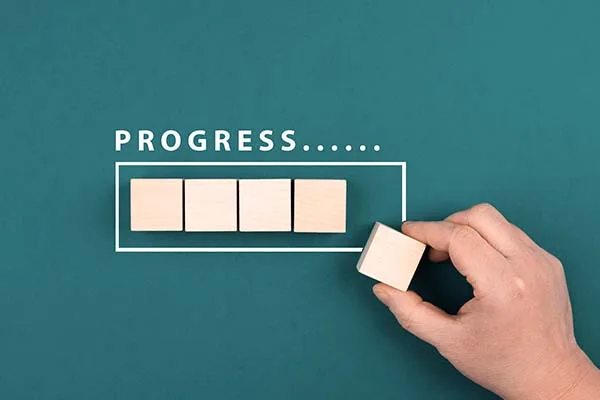
CILAR: Progress isn’t linear. So, if we’re trying a program and it doesn’t work as we hoped, we go back and reflect on what we missed and learn from it.
Not offer perspective, not share some best practice, not use this network to amplify the great work that you’re doing. Everybody has a role to play in the CILAR network. If you’re not ready, that’s okay. Come revisit us in a year or whenever you feel like you can step in fully, whether it’s financially, resource-wise or insights-wise. Come back and use the network effect. The coalition is a coalition. We don’t call ourselves a community-based membership. We call ourselves a coalition because everybody has an active role to play in advancing one or more programs forward together.
As you’re talking about the anticipated pushback or the swinging of the pendulum or whichever view of what’s happening now, by the way, my first question was going to be, what the heck is going on? There’s probably too much pressure off the top. Maybe we’ll come back to that.
We’ll come back to that.
Dealing With Frustration In Social Impact Work
You define that very much as positive, like staying focused, staying mission-driven, and moving along, which is exactly what you would hope organizations are doing to stay strong in the face of this social change or pushback. How do you avoid feeling frustrated? What frustrates me isn’t just the pushback of this good work.
CILAR is an example, but there are so many organizations doing this really important work. I think of a lot of the organizations that we’ve had the chance to work with that are dealing with newcomers to Canada, the issues they’re facing now are so profoundly different than they were a year ago and not in a healthy way.
I feel that frustration. Who is made comfortable by this? Who we’re making this okay for and the ideas that we’re making okay again, which is I find very frustrating. You don’t have to confess frustration, but what I’m is how do you balance that? You knew it may come. You understood it may be a part of it. Now that it’s here, how do you personally, as a leader in this space, react?
I’ll answer that in two parts because you’re not asking me to admit frustration, but frustration is a natural part of life. Not everything works out the way that we want to. From a personal standpoint, I think, I’ve had to learn over the past few years on managing my own expectations. Frustration comes when I have an idea in my head of how something should go, but all the factors outside of my control don’t allow it to happen.
One is self-managing expectations and just accepting that frustration. We’re allowed to be frustrated. To us, these are basic concepts and our everyday norm of we hope society operates. How we hope to see the world interact with one another in different communities and each other and so on and so forth. It’s not everybody’s lived experience. It’s not everybody’s priority. That is all grounded in the environment that they were exposed to and the experience that they had.
I have to do what’s within my control. Accepting that I’m allowed to get frustrated is one. The second is acknowledging that not everything is within my control. Being able to reset a little bit and recalibrate my expectations, we could have had a great first couple of years and then the third year, really difficult. When that frustration comes, you become blinded to the opportunities.
Not everything works out the way we want, but frustration is part of a natural part of life. Recalibrating our expectations is key to moving forward. Share on XIn that third year, maybe the progress we were supposed to make was only incremental as opposed to exponential, but that’s part of the process. Instead of getting frustrated and down on myself and down on the team and down on the progress and down on the efforts that everybody’s trying to make, I think it’s just about recalibrating the expectation to say, “Okay, maybe this year’s more of a bit of a pause.” Maybe that that’s where we’re supposed to take a bit of a breather, really reflect on what was successful in the last years, and ask ourselves what’s changed. What do we now need to shift to?
If you’re experiencing frustration where you are right now, allow it to happen because we’re human at the end of the day. Be frustrated, but don’t let that frustration blind you. Take that pause, take that moment to recalibrate, reset your expectations on the personal side. I think on the second part, in terms of a community, it’s very easy to go into our meetings together and express and air our frustrations around what we’re seeing, the resistance we’re feeling in the process, maybe the expected outcomes that we were hoping to have versus not have, and then commiserate and go down this like really spirally path of saying, “Nobody’s ready for this.” Throw our hands up and kind of point the finger and say, “Maybe now is not the time.”
As opposed to collectively being there for each other. You don’t always show up 100%. I think Brené Brown said this. When you’re down feeling like 50%, ideally your partners, whether that is your life partner or your team, if they’re able to come in and fill in that other 50%, then you don’t feel so alone and you don’t get down on yourself even harder.
From a community and a coalition perspective, that frustration allow for it, talk about it because we will uncover a lot around what’s driving those frustrations, but then don’t let that stop you from then having the productive conversation, recognizing and respecting where everybody’s at to say, “How do we make a little bit of progress forward?” At least, how do we hold the line if that’s where we’re at right now? Both from a personal and community standpoint, I think it’s that opportunity to acknowledge, pause, reflect, and then recalibrate to move forward.
Serena, I think that is amazing advice for leaders of social profit organizations and all of us as individual citizens in the face of world events. Thank you very much for sharing that. Speaking with one of my colleagues who pointed out a lot of the pushback against equality, diversity, and inclusion initiatives in the social profit space and in the corporate space isn’t happening because EDI failed. It’s because EDI was working.
That actually made me feel a lot better that this is about the change that is imagined is a healthy, positive choice for the future of innovation, for the future of economic prosperity and just, frankly, human decency. It is because it was working that it’s encountering resistance. Hopefully, all of our readers and all of our colleagues across the country that may read this go away with some of your optimism and determination to continue to make that positive change.
It’s definitely working. Now we just, again, have to figure out how to make sure it continues to work in the changing environment. We now need to recalibrate to how things have shifted in light of the change that we were able to make in light of the progress we were able to push forward. It’s a good pat on the back moment. I couldn’t agree more.
Listening To Resistance For Meaningful Impact
Pat on the back, now get back to work. Your work is to answer our final question, which is Serena, what are you looking forward to?
I’m going to throw something out there. I’m looking forward to the resistance. If you’re able to set the boundaries and protect your energy a little bit, listen to the resistance. Listen to what it’s telling us. I think it will shed a lot of light in terms of where our next focus needs to be. Instead of trying to do everything, which is how CILAR started, we needed to test the landscape. What was everything everywhere that we could make impact.
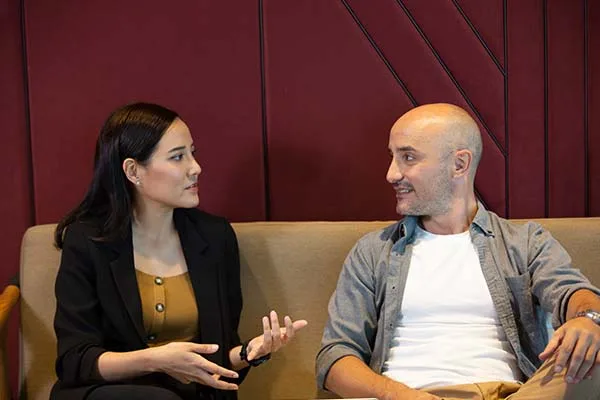
CILAR: Listen to the resistance. It will shed a lot of light in terms of where our next focus needs to be.
By listening to the resistance right now, we’re able to understand where can this coalition focus to have the most impact in the changed environment. If EDI is the big pushback, great. We understand that respect and prosperity for Canadians, productivity and innovation for Canadians is the path forward. What are the programs that we can focus on that drives that grounded in our principles of how we do work? We work with community, we listen to all of the perspectives and we make sure it is accessible to everybody in Canada. It just shifts how we do the work. We learned a lot by listening to the resistance and being able to make sure that our focus going forward works with that resistance, not against it.
Serena, we could have this conversation all day. I have so enjoyed you sharing your perspective and the great work of CILAR that you and your colleagues have accomplished and will continue to accomplish. Thank you so much for being on the show.
Thank you for having us. We really appreciate it.
Important Links
About Serena Nguyen
 Serena brings 14 years of experience as a strategist, advisor, and mentor in Fortune 500 companies and Canada’s top startups, cultivating pathways for innovation and commercialization. As the founding Executive Director of the Coalition of Innovation Leaders Against Racism (CILAR), she also led the launch of over 15 programs in its first 3 years, championing inclusion across the innovation sector.
Serena brings 14 years of experience as a strategist, advisor, and mentor in Fortune 500 companies and Canada’s top startups, cultivating pathways for innovation and commercialization. As the founding Executive Director of the Coalition of Innovation Leaders Against Racism (CILAR), she also led the launch of over 15 programs in its first 3 years, championing inclusion across the innovation sector.
Now, Serena is dedicated to the growth of a productive, sustainable and inclusive blue economy. Drawing on her leadership roles at Microsoft for Startups Canada MaRS Discovery District and CILAR, she offers cross-sectoral insights to promote strategic growth in the blue economy. Her mission is to accelerate ocean literacy and action, where every individual and organization not only understands how they connect to the ocean, but is also empowered to take action.
Recognized for her ability to connect disparate dots and drive outcomes, Serena collaborates with accelerators, corporates, NFPs, NGOs, and governments to advance ocean action and sustainability. Outside of work, she explores the depths as a new diver, freediver, and surfer. For business opportunities or collaborations, feel free to connect.

